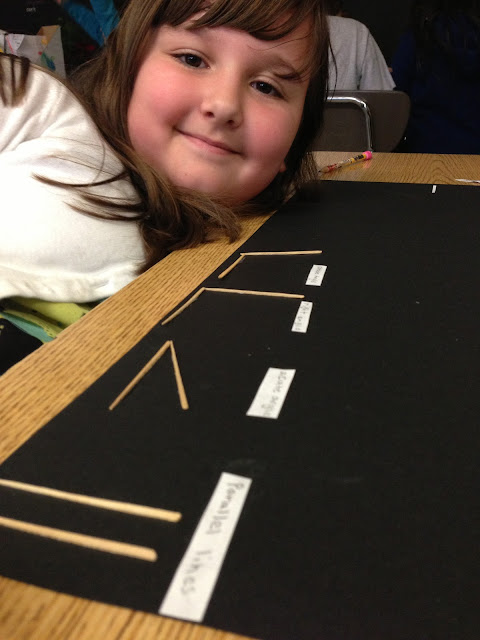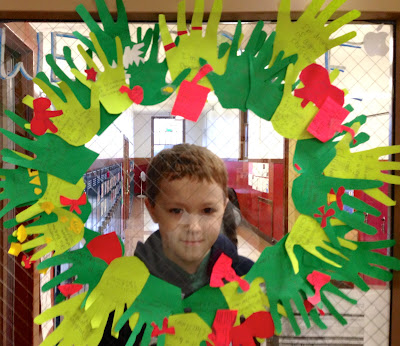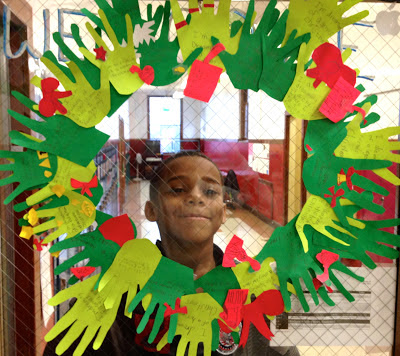Sunday, December 23, 2012
Saturday, December 22, 2012
Friday, December 21, 2012
Thursday, December 20, 2012
Homework over the Holidays?
 Interesting article on Why You Shouldn't Assign Homework Over The Holidays.
Interesting article on Why You Shouldn't Assign Homework Over The Holidays. Thank you to +Tess Pajaron for sending this to me.
Parents- I'd love to hear your thoughts. Is Homework over a Winter Break a good idea?
Wednesday, December 19, 2012
Tuesday, December 18, 2012
Monday, December 17, 2012
Recent News Events
Dear Parents,
I hope that you, or at least your kids, are all enjoying the first day of Winter Break. The events of the past week have caused me to hug my two children a little tighter, hold them a little longer and made me appreciate the true gift that they are.
It's hard to try and explain events when, as adults, we don't understand them ourselves. I hope the following guidelines help as we all try get through this difficult time.
-Sam
Guidelines for “Helping Children Deal with News Violence”
by
Diane Levin, Ph.D.
1. PROTECT CHILDREN, ESPECIALLY YOUNG CHILDREN, AS MUCH AS POSSIBLE FROM EXPOSURE TO NEWS VIOLENCE AND FROM HEARING ADULTS TALK ABOUT IT. While it's rarely possible to protect them fully from news violence, having safety & security predominate is still vital for healthy development.
2. TRUSTED ADULTS HAVE A VITAL ROLE TO PLAY HELPING CHILDREN SORT OUT WHAT THEY SEE & HEAR & FEEL SAFE. When exposed to violence children need trusted adults to help them safely work out their ideas, often over an extended period of time. How you react plays a big role in determining how they think & feel & what they learn.
3. BASE WHAT YOU SAY ON THE AGE, UNDERSTANDINGS & CONCERNS OF THE CHILDREN.
• YOUNG CHILDREN WON’T UNDERSTAND VIOLENCE AS ADULTS DO. When they see or hear about something scary, they often relate it to themselves and worry about their own safety. They tend to focus on one thing at a time and the most salient aspects of what they see. Because they don't have logical causal thinking, it's hard to figure out the logic of what happened and why, or sort out what's pretend and real. They relate what they hear to what they already know which leads to misunderstandings. "Mommy works in a skyscraper; it can blow up too!" or “Planes in the war carry bombs; so planes I see in the sky carry bombs too!”
• OLDER CHILDREN BEGIN TO THINK ABOUT WHAT UNDERLIES AN EVENT AND POSSIBLE REAL WORLD IMPLICATIONS. They use more accurate language and make logical causal connections, but still don't understand all the meanings and can develop misunderstandings and fears. Find out the meanings behind their language and base your responses on what they seem to know and be asking.
4. START BY FINDING OUT WHAT CHILDREN KNOW. If a child raises the issue, ask, "What have you heard about that?" You can start a conversation with, "Have you heard anything about a plane crash [or bombs]? What did you hear?”
5. ANSWER QUESTIONS AND CLEAR UP MISCONCEPTIONS THAT WORRY OR CONFUSE. You don't need to provide the full story. Just tell children what they seem to want to know. Don't worry about giving "right answers" or if children have ideas that don’t agree with yours. You can help children learn to distinguish real from pretend violence. You can calmly voice your feelings and concerns.
6. SUPPORT CHILDREN'S EFFORTS TO USE PLAY, ART, AND WRITING TO WORK OUT AN UNDERSTANDING OF SCARY THINGS THEY SEE AND HEAR. It’s normal for children to do this in an ongoing way; it helps them work out ideas and feelings; it shows you what they know and worry about. Open-ended (versus highly-structured) play materials—blocks, airplanes, emergency vehicles, miniature people, a doctor’s kit, markers and paper—help children with this.
7. BE ON THE LOOKOUT FOR SIGNS OF STRESS. Changes in behavior such as increased aggression or withdrawal, difficulty separating or sleeping, or troubles with transition are all signs that additional supports are needed. Protecting children from violent media images, maintaining routines, providing reassurance & extra hugs can help children regain equilibrium.
8. HELP CHILDREN LEARN ALTERNATIVES TO THE HARMFUL LESSONS THEY MAY BE LEARNING ABOUT VIOLENCE AND PREJUDICE. Talk about non-violent ways to solve conflicts in their own lives. Help them look at different points of view in conflicts. Point to positive experiences with people different from themselves. Try to complicate their thinking rather than tell them how to think.
9. DISCUSS WHAT ADULTS ARE DOING TO MAKE THE SITUATION BETTER AND WHAT CHILDREN CAN DO TO HELP. Children can feel secure when they see adults working to keep the world safe. And taking meaningful action steps themselves also helps children feel more in control.
10. TALK WITH OTHER ADULTS. Work together to support each other’s efforts to create a safe environment for children. This includes agreeing to protect children from unnecessary exposure to violence. Talking together can also help adults meet their own personal needs.
Sunday, December 16, 2012
Friday, December 14, 2012
Celebrity Guest Read Alouder Today: Elizabeth Nye from Girls Inc.
Our classroom received an early Christmas gift today. The Executive Director of
Girls Inc, Elizabeth Nye stopped by for Celebrity Read Aloud. We have several after school SUN Girls Inc classes here at James John School.
 |
| We really enjoyed hearing Elizabeth read to us today. |
 |
| We loved the Girls Inc. swag bags that Elizabeth brought. |
Tuesday, December 11, 2012
So . . . What's Your Angle?
 |
| Lina & Jacob working hard. |
This afternoon we worked the angles in Geometry. We made super cool posters showing the different angles and we started making different types of triangles. Ask your 3rd Grader to show you (preferably with their arms . . NOT the cat) an acute, obtuse and right angle.
 |
| Extreme close up of Emma's work. |
 |
| O'Maree & Savy getting things glued down. |
 |
| Abel & Abi using teamwork. |
 |
| Josiah & Ida plotting out their right triangle. |
 |
| That's not lipgloss Rayann. |
 |
| Aaliyah and Samara are way too excited about Geometry. |
 |
| Lindsay loves to glue! |
 |
| What we were going for. |
Monday, December 10, 2012
Sunday, December 9, 2012
Wednesday, December 5, 2012
James John Girls Running Club Digital Short
Here's a really great video of our James John Girls Running Club! Thanks Gigi Fogarty for launching this great new SUN School Class.
Friday, November 30, 2012
What's That In Santa's Beard? . . . .
 |
| Thanks to Gigi for helping design, decorate and attach our Santa's to their frames. |
. . . .it's our persuasive letters to Santa of course. You can see them all December long at the St. Johns Starbucks. Thanks to Store Manager Peter and again to Kelly for supporting our school.
Tuesday, November 27, 2012
Celebrity Guest Read Alouder Today: Swati Adarkar from Children's Institute
Today we were so lucky to have the President and CEO of Children's Institute,
Swati Adarkar, stop by our room for Read Aloud.
 |
| Swati's visit was definitely the highlight of our day! |
We learned that Children's Institute works with State and Local Officials to improve early educational opportunities for kids from birth to 3rd Grade, which we all agreed was pretty cool.
Monday, November 26, 2012
Tuesday, November 20, 2012
Thank You Parents!
Sunday, November 18, 2012
Saturday, November 17, 2012
Thank You Ms. Hay!
 |
| Ms. Hay helping a reading group. |
 |
| U of P Students get their experience "in the field" and help our class with one on one support. |
Thursday, November 15, 2012
Student Blogging
 Today we started blogging our final drafts of our letter to the President of the United States.
Today we started blogging our final drafts of our letter to the President of the United States. You can see a few of them are already up on the Student Writings Page. We hope to have all of our letters up by the end of the day tomorrow.









Subscribe to:
Comments (Atom)






























